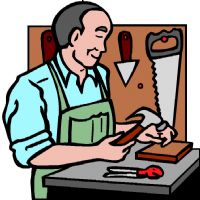

The present simple usually shows something that is true in the present and is relatively unchanging, or is a regularly occurring action. The first one is a passive action in the present simple. Yes! We can understand this sentence both ways.īut, the second one ( broken = adjective) is more likely, because of the tense in your sentence. Submitted by Hosseinpour on Sat, - 05:04 For example, if I hire some workers to paint my house, I can say 'I'm having my house painted'. This can be used when speaking about arrangements you made with people in which they do something.Īnother common causative structure uses 'have' + object (person or thing) + past participle to express the idea that someone arranges for a task to be done.

Here the structure is the verb 'have' + object (a person as subject) + bare infinitive. It asks if you arranged for another person to help you. The second sentence shows a somewhat more specific use, that of 'have' (or 'get') in a causative structure. There are many, many uses in which an infinitive can be added to an object in a similar way. 'have anything to do', 'have any meetings to attend'. Here the structure is 'have' + object + 'to' infinitive you could change it in many different ways, e.g. In 1, the question asks if a person who could help you was present or available. GapFillTyping_MTY0MjU= Book traversal links for Active and passive voice GapFillDragAndDrop_MTY0MjQ= Active and passive voice 7 The meeting is scheduled to start at seven. John has been asked to make a speech at the meeting. Some verbs which are very frequently used in the passive are followed by the to-infinitive: be supposed to ReorderingHorizontal_MTY0MjI= Active and passive voice 5 We can use phrasal verbs in the passive: Active She was sent a cheque for a thousand euros. Someone sent her a cheque for a thousand euros. We can use the indirect object as the subject of a passive verb: Active We sometimes use the verb get with a past participle to form the passive:īe careful with that glass.

The doors are going to be locked at ten o'clock. The passive infinitive is made up of to be with a past participle: GapFillDragAndDrop_MTY0MTk= Active and passive voice 3 GapFillDragAndDrop_MTY0MTg= Active and passive voice 2 If we want to show the person or thing doing the action, we use by: Passive forms are made up of the verb be with a past participle: Subject Transitive verbs have both active and passive forms: Active


 0 kommentar(er)
0 kommentar(er)
